Excerpts from Jim Conrad's
Naturalist Newsletter
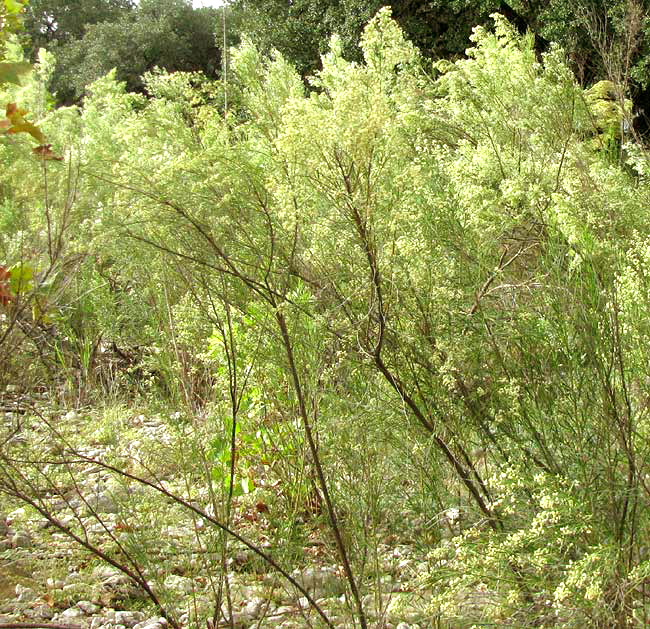
from the the October 14, 2012 Newsletter issued from the valley of the Dry Frio River in northern Uvalde County, southwestern Texas, on the southern border of the Edwards Plateau; elevation ~1750m (~5750 ft); N29.62°, W99.86°; USA
ROOSEVELT WEED
On the little Dry Frio River's streambed where sandbars and low-lying deposits of cobbles and gravel usually remain dry and soilless, but sometimes are underwater a few days as floodwaters rage over them, there are dense thickets of robust, soft-woody, much branching shrubs ten feet high and taller (3m). Nowadays each of these plants bears thousands of tiny white flowers, so many that from a distance the plants look white, as seen above.
Up close you can see that the flowers are grouped in heads typical of the huge Composite or Sunflower Family, and that the leaves are short, slender affairs, as shown below:
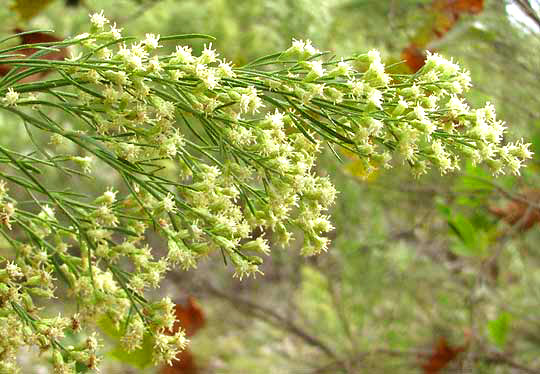
In thickets with many bushes it's easy to see that there are two kinds of these plants, one presenting a slightly more greenish overall appearance, and the other more brightly white, as seen below:
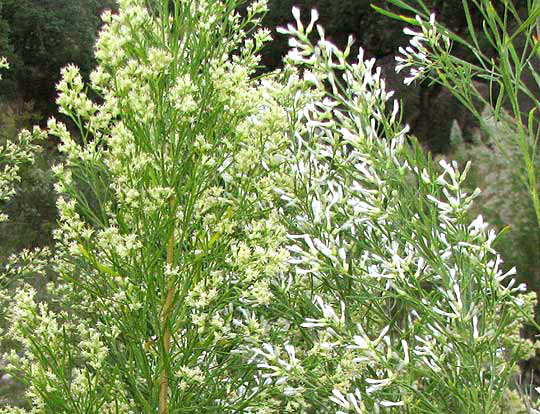
The darker plant on the left in that picture is the male bearing only male flowers, while the whiter-flowered female is on the right. A close-up of heads of male flowers is below:
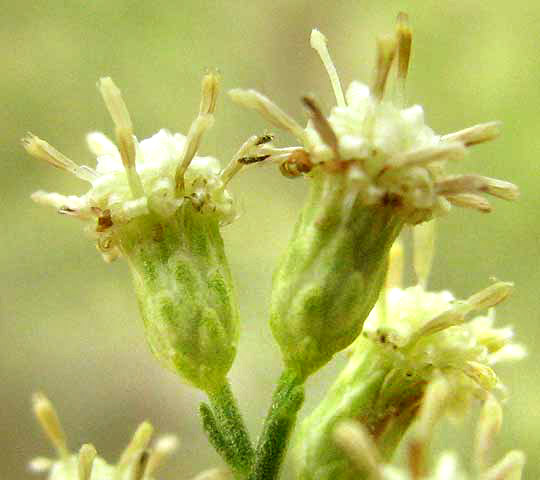
In that picture the slender items projecting from the heads' tops are cylinders formed by five anthers joined at their margins. Also notice that there are no petal-like ray flowers. A close-up of heads of female flowers can be compared below:
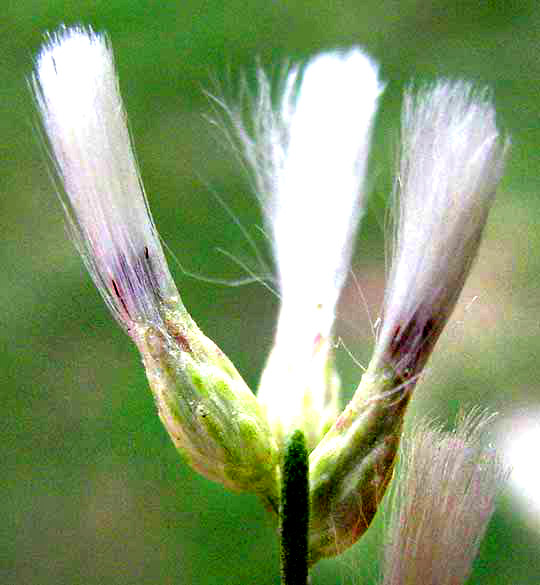
The white fuzz extending from the urn-shaped involucres is composed of pappus hairs, a pappus being the collection of hairs or other items atop the ovary or future achene-type fruit. Once the achene is mature the pappus will serve as a parachute helping the fruits disseminate on the wind.
These eye-catching, vigorous plants are known by several English names, such as Roosevelt Weed, New Deal Weed, Poverty Weed, False Willow, Dry-land Willow, and Jara Dulce. It's BACCHARIS NEGLECTA, found mostly in arid northern Mexico but also in most of southern and southeastern Texas, and small parts of extreme southern Arizona and New Mexico.
There's a story behind those common names evoking Roosevelt, the New Deal and Poverty. During Roosevelt's presidency as the US was trying to recover from its Great Depression and Dust Bowl days our Baccharis neglecta was planted in many areas in an attempt to revegetate the severely drought-damaged soil. However, the very same aggressiveness and adaptability that made it useful then are causing problems now, because in many areas the plant has become an aggressive invader of rangeland and disturbed sites. It forms dense stands and when burned or cut quickly resprouts.
In the US Deep South, mainly along the Coastal Plain, a similar but not as woody and tall species, Baccharis halimifolia, similarly aggressively invades abandoned fields and forests that have been clearcut.
The genus Baccharis is mostly centered in tropical and warm-temperate South America. Up to 450 species are thought to exist, of which 21 are listed in the online Flora of North America.